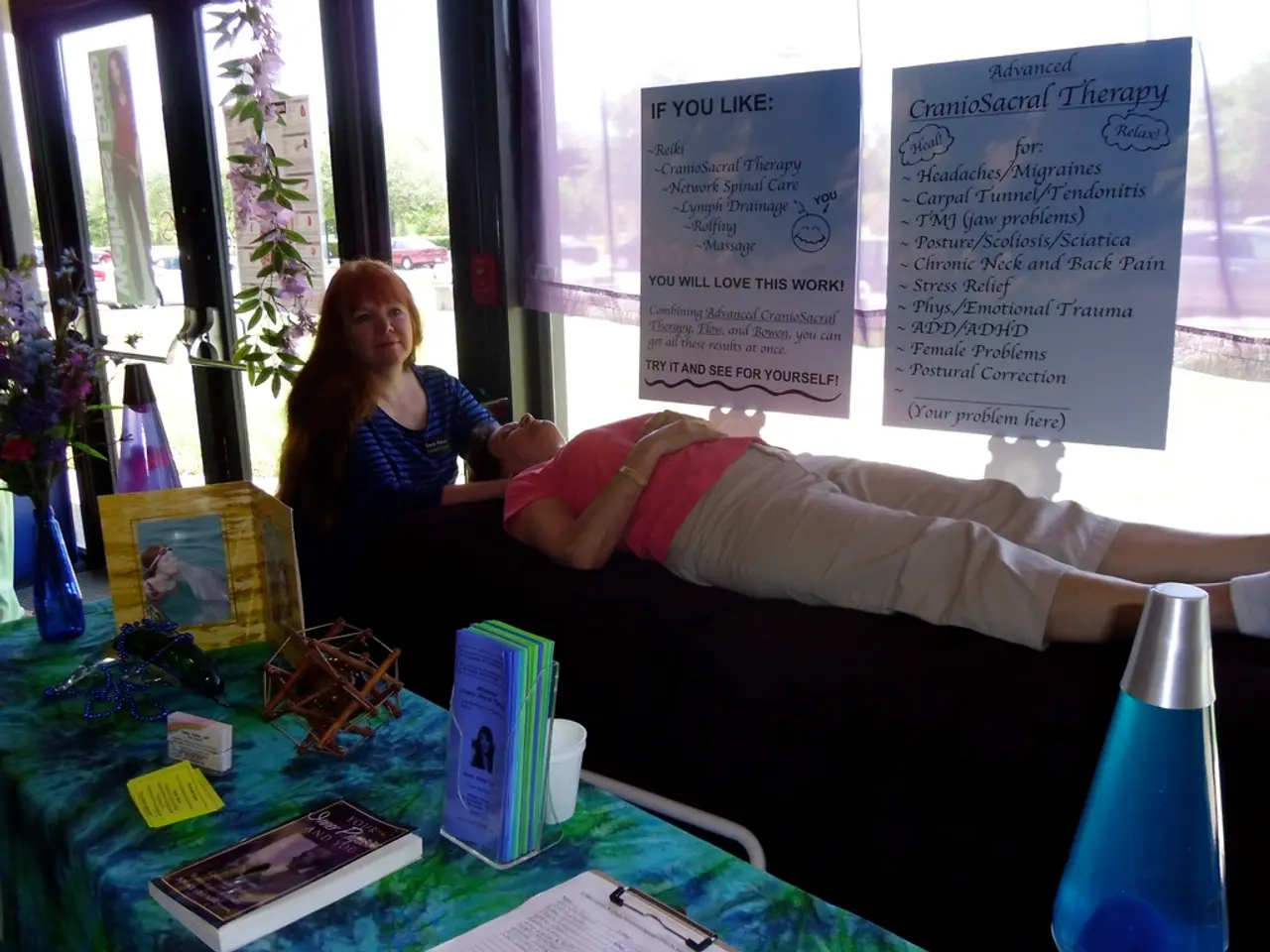Elevated Arousal Levels: Symptoms, Origins, and Strategies for Management
Hyperarousal, a symptom often associated with Post-Traumatic Stress Disorder (PTSD), can cause a range of distressing effects such as sleeping problems, irritability, and increased heart rate. While various strategies like mindfulness, meditation, and regular exercise are commonly recommended, there are additional effective coping strategies that can help manage hyperarousal more effectively.
1. **Stress Management Focused on Expanding the Window of Tolerance**: Learning to tolerate manageable amounts of stress while developing the ability to return to a state of calm after activation is crucial. Techniques such as deep breathing, relaxation practices, and mindfulness help regulate the nervous system, improving emotional regulation and resilience.
2. **Grounding and Executive Function Support**: Grounding techniques keep individuals connected to the present moment during distress, allowing the prefrontal cortex to re-engage with emotional responses. This improves the ability to manage hyperarousal symptoms effectively.
3. **Addressing Perfectionism and Internal Criticism**: Many trauma survivors struggle with patterns like perfectionism, workaholism, and people-pleasing. Developing self-compassion and breaking cycles of internal criticism can reduce these maladaptive coping behaviors and help lower hyperarousal by mitigating psychological stressors.
4. **Integrated Professional Therapies**: Evidence-based therapies such as trauma-focused Cognitive Behavioral Therapy (CBT), Cognitive Processing Therapy (CPT), Prolonged Exposure (PE), and Eye Movement Desensitization and Reprocessing (EMDR) are considered first-line treatments. They help individuals process trauma memories safely and modify maladaptive thought patterns that contribute to hyperarousal.
5. **Building Internal Coping Skills and Environmental Adjustments**: Developing skills to recognize personal limits regarding stress and making changes to one's environment to reduce triggers are important. This holistic approach supports nervous system regulation outside therapy sessions, creating greater stability and lessening hyperarousal.
These strategies complement basic coping methods and therapy, offering a broader toolkit to manage hyperarousal symptoms more effectively in PTSD. Combining physiological regulation techniques with cognitive restructuring and self-compassion approaches enhances recovery and resilience.
For those experiencing symptoms of hyperarousal or PTSD, it is essential to seek professional help for a proper diagnosis and treatment plan. If a person is concerned about a colleague, friend, or relative who may be experiencing hyperarousal or PTSD, encouraging them to speak with a doctor or offering to accompany them can be helpful. Offering to try coping mechanisms such as mindfulness, deep breathing, or meditation with a loved one can also be beneficial.
References: [1] Briere, J., & Scott, C. (2013). Treating Complex Trauma: A Sequenced, Relationship-Based Approach. Guilford Press. [2] van der Kolk, B. A. (2014). The Body Keeps the Score: Brain, Mind, and Body in the Healing of Trauma. Viking. [3] Hembree, E. A. (2010). Psychopharmacology of PTSD. In M. F. Ressler & M. F. Friedman (Eds.), Oxford Textbook of Psychotraumatology (pp. 228–240). Oxford University Press. [4] Rothbaum, B. O., & Foa, E. B. (2007). Eye Movement Desensitization and Reprocessing (EMDR) in the Treatment of Trauma and Stress-Related Disorders. In R. G. Pynoos & P. J. Steinberg (Eds.), Handbook of Trauma Psychology (pp. 331–347). Guilford Press.
- Health and Wellness Strategies Beyond Mental Health: Beyond traditional mental health practices, fostering overall health and wellness can also aid in managing hyperarousal. Regular exercise, a balanced diet, skin care, and good sleep hygiene can contribute to a sense of self-care and overall physical well-being, both of which are essential for emotional regulation.
- Exploring Alternative Therapies and Medications: In certain contexts, therapies and treatments such as Paxlovid, CBD, and nutrition-focused interventions may provide additional avenues for managing hyperarousal and other PTSD symptoms. However, it is important to consult with healthcare professionals for guidance on the suitability and effectiveness of these approaches in the workplace-wellness setting.






